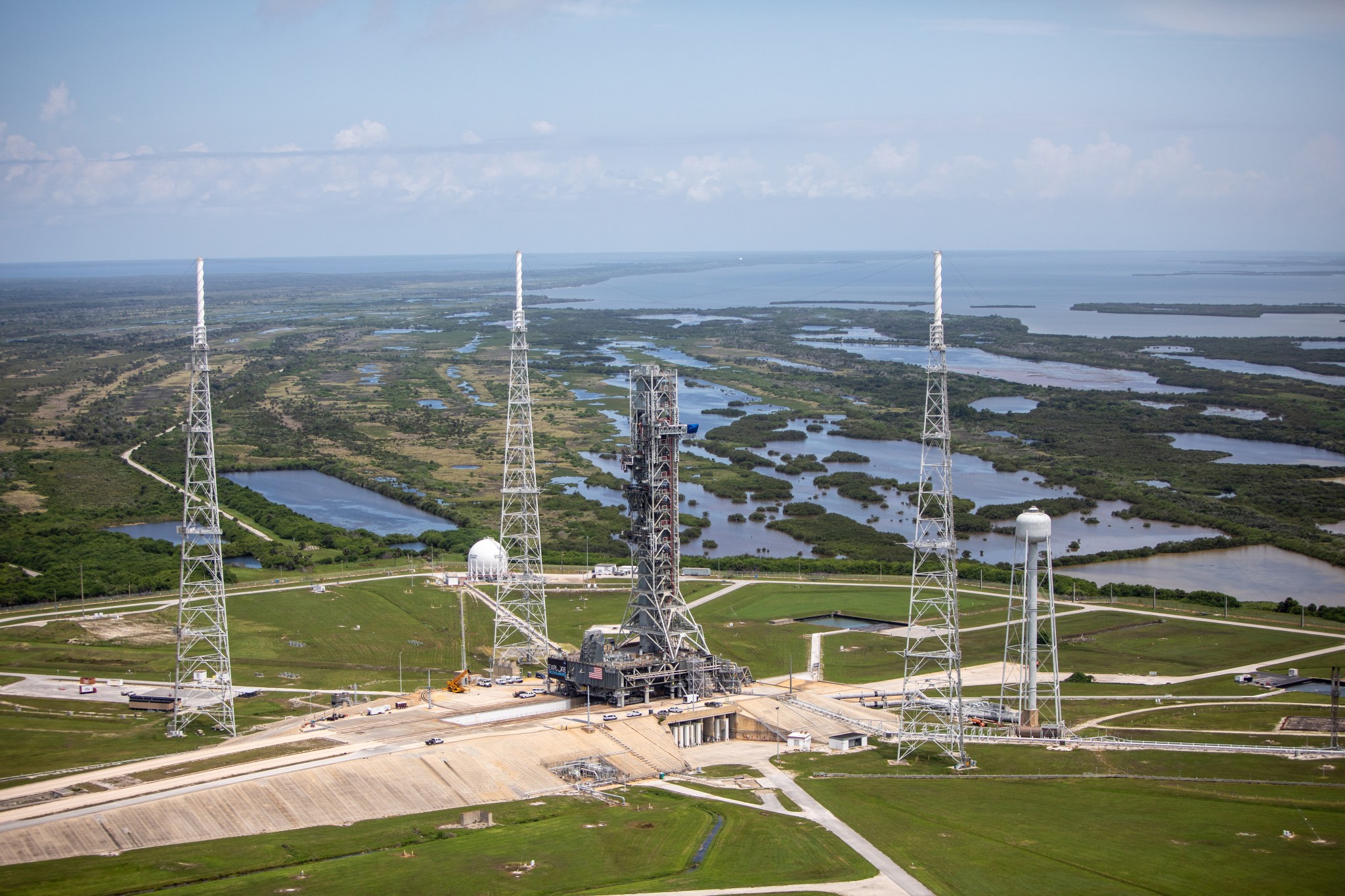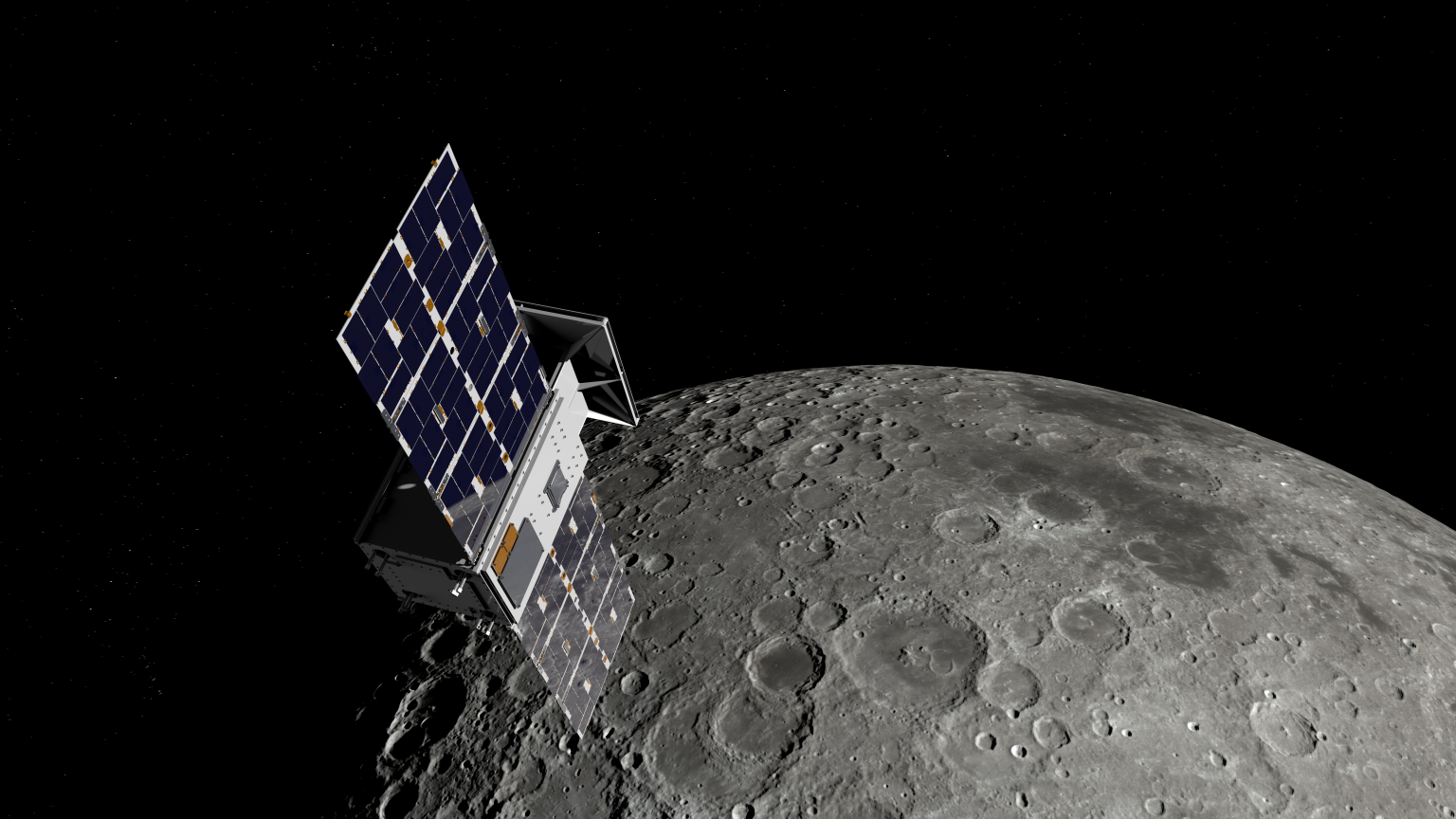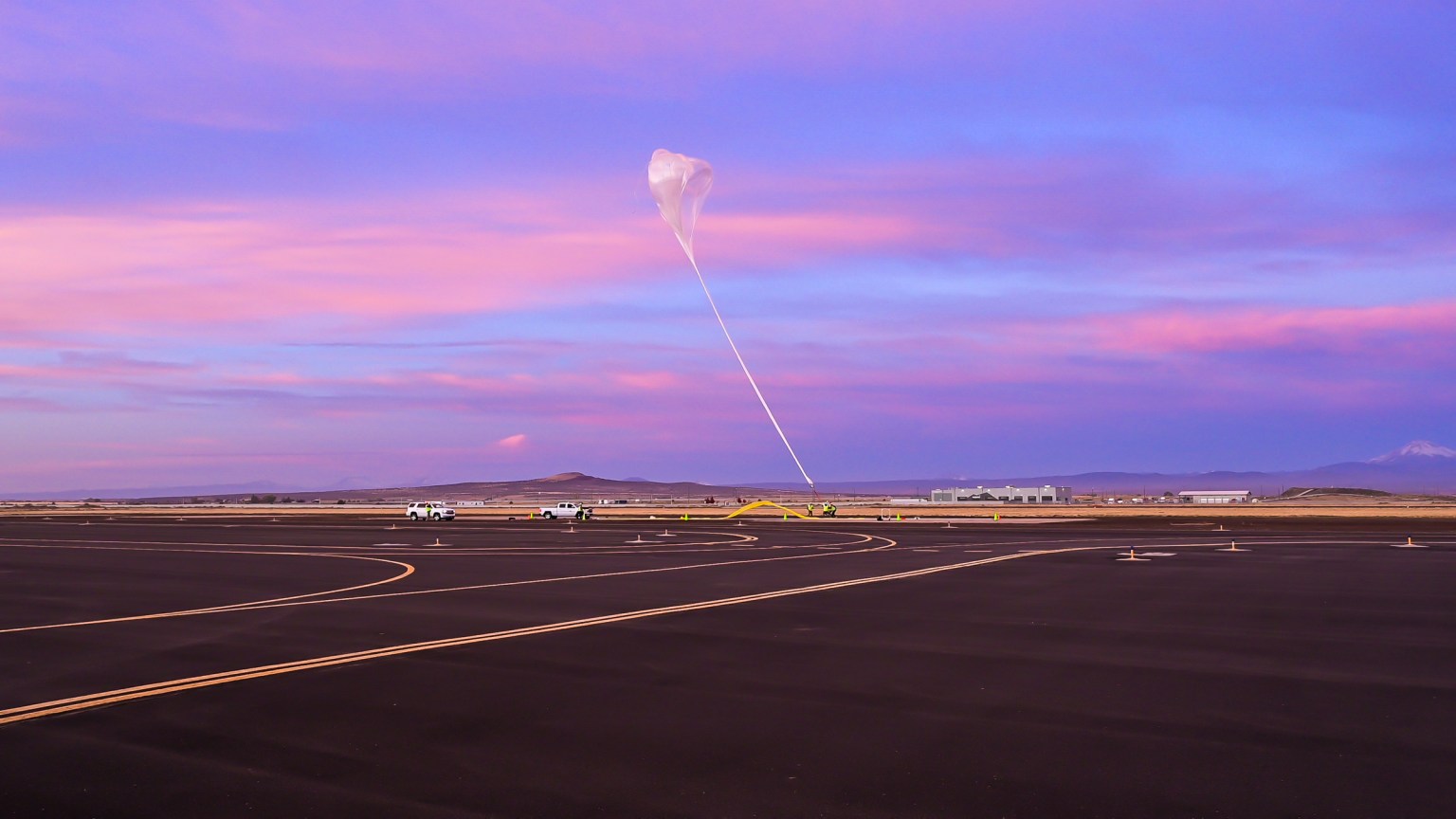January 2021 – December 2021
(Click here for recent NASA Launches)
| Launch Campaign | Launch Provider | Mission Name | Launch Date | Deployment Status | Rocket | Mission Description | Payload(s) | Organization(s) |
|---|---|---|---|---|---|---|---|---|
| Cargo Resupply | ELaNa 38 | DALI (Daily Atmospheric Ionospheric Limb Imager) | 12/21/21 | 1/26/22 | Falcon 9 | This mission will use a 6U cubesat to study molecular oxygen density of Earth’s upper atmosphere to help understand the processes that affect the upper atmosphere and ionosphere. | The Daily Atmospheric Ionospheric Limb Imager | Aerospace Corporation |
| Cargo Resupply | GASPACS (Get Away Special Passive Attitude Control Satellite) | 12/21/21 | Falcon 9 | The 1U CubeSat is a technology demonstration mission designed to test inflatable structures in space. The project aims to present a possible solution to the limited capacity of spacecraft by providing an inflatable boom that can be packed into a small space and then extended into something much larger. | AeroBoom and camera | Utah State University | ||
| Cargo Resupply | PATCOOL (Passive Thermal Coating Observatory Operating in Low-Earth Orbit) | 12/21/21 | Falcon 9 | This mission will use a 3U to test the thermal samples when completely isolated from all sources of heat transfer aside from the Sun and deep space. A secondary objective is to test the a drag de-orbit device to modulate the drag area of a host CubeSat while maintaining passive 3-axis stabilization using aerodynamic and gravity gradient torques. | Aluminum housing for containing samples and ADAMUS Laboratory’s drag de-orbit device | NASA’s Kennedy Space Center, University of Florida | ||
| Cargo Resupply | TARGIT (Tethering And Ranging mission of the Georgia Institute of Technology) | 12/21/21 | Falcon 9 | This project aims to act like a technology demonstration for more complex LiDAR imaging missions; a 3U cubesat will test on-orbit an imaging LiDAR (light detection and ranging) system capable of cm-level topographic mapping. The mission will accomplish this by tethering an inflatable target of known shape and reflectance that will serve to verify the performance of the imaging LiDAR and its supporting subsystems. | Optical imager | Georgia Tech Research Corporation | ||
| Landsat 9 | ELaNa 34 | CUTE (Colorado Ultraviolet Transit Experiment) | 9/27/21 | 9/27/21 | Atlas V | CUTE is a 6U spacecraft that will characterize the composition and mass-loss rates of exoplanet atmospheres by measuring how the NUV light from the host star is changed as the exoplanet transits in front of the star and passes through the planet’s atmosphere. | Near-ultraviolet (NUV) transmission spectroscopy | University of Colorado at Boulder |
| Landsat 9 | CuPID (Boston University) | 9/27/21 | 9/27/21 | Atlas V | The main objective of this mission is to use a 6U spacecraft to measure soft X-rays emitted from the process of charge-exchange when plasma from the solar wind collides with neutral atoms in the Earth’s distant atmosphere. | A soft X-ray imager, microdosimeter suite, and three-axis magnetometer | Boston University | |
| Cargo Resupply | ELaNa 37 | CAPSat (Cool Annealing Payload Satellite) | 8/29/21 | 10/12/21 | Falcon 9 | This is a 3U CubeSat will evaluate technologies for healing radiation damage in crystalline single photon detectors. | SPAD (single-photon avalanche detectors) quantum annealing payload | University of Illinois |
| Cargo Resupply | PR-CuNaR2 (Puerto Rico CubeSat NanoRocks-2) | 8/29/21 | 10/12/21 | Falcon 9 | As the first Puerto Rican spacecraft, this 3U mission will study low-energy collisions in a space environment and will use a mechanically shaken device to study low-energy particle collisions. | GimmeRF (Gimme Radio Frequency) receiver and CARLO (Charge Analyzer Responsive to Local Oscillation) instrument. | International American University of Puerto Rico – Bayamon Campus | |
| Cargo Resupply | Space Hauc (Science Program Around Communications Engineering with High-Achieving Undergraduate Cadres) | 8/29/21 | 10/12/21 | Falcon 9 | This is a 3U CubeSat educational mission intended primarily as a hands-on student training mission that will also demonstrate X-band beam steering from a CubeSat platform. | X-Band Phased Array Communications | University of Massachusetts-Lowell | |
| Cargo Resupply | ELaNa 36 | RamSat | 6/3/21 | 6/14/21 | SpaceX 22 – Falcon 9 | This 2U CubeSat will capture images of forest regrowth, sending those images to ground control in Robertsville Middle Schools’ STEM Classroom using radio communication. | Multispectral and near-infrared cameras | Oak Ridge Public School (Robertsville Middle School) |
| Cargo Resupply | ELaNa 33 | IT-SPINS (Ionospheric-Thermospheric Scanning Photometer for Ion-Neutral Studies) | 2/20/21 | 6/29/21 22:50:00 UTC | NG-15 – Antares | This mission will provide the first two-dimensional (2D) tomographic imaging from a 3U research CubeSat, addressing the basic nature of the nocturnal ionosphere. Once deployed, the 3U CubeSat will commence a more than six-month mission of measuring the properties of Earth’s atmosphere at the edge of outer space. | CubeSat Tiny Ionospheric Photometer (CTIP) instrument | Montana State University, Applied Physics Laboratory at Johns Hopkins University |
| SpaceX Transporter 1 | ELaNa 35 | PTD-1 (Pathfinder Technology Demonstrator 1) | 1/24/21 | 1/24/21 01:16.28 UTC from Sherpa-FX dispenser | Falcon 9 | This project will test the operation of a variety of novel technologies on five demonstration missions on a 6U CubeSat. PTD-1 is the first of five of these demonstrations that will test the HYDROS-C water thruster developed by Tethers Unlimited. | Hydros-C propulsion system | NASA’s Ames Research Center & Glen Research Center, Tyvak Nanosatellite Systems |
| SpaceX Transporter 1 | Commercial Provider | VR3X | 1/24/21 | 1/24/21 00:59:09 UTC from Maverick’s Mercury Dispenser | Falcon 9 | V-R3x consists of three 1U CubeSats aimed to demonstrate novel spacecraft swarm technologies and techniques for radio networking and navigation. This small scale demonstration will allow the implementation for future larger multi-spacecraft missions, enabling NASA to pursue its future science, technology, and exploration goals. | COTS S-band SemTech SX1280 Transceiver | NASA’s Ames Research Center, Stanford University, and Carnegie Mellon University |
CubeSat Launch Initiative ELaNa 20
Rocket: LauncherOne Launch Date: 1/17/2021 Nominal Orbit: ~500 x 500 km
| Mission Name | Mission Description | Payload(s) | Organization(s) |
|---|---|---|---|
| PolarCube | This mission will use a 3U to collect Earth surface and atmospheric temperature data using a passive microwave radiometer operating at the 118.7503 GHz O2 resonant frequency. The objective is to collect brightness temperature spectra at high spatial resolution at a very low cost for remote sensing science and technology evaluation. | MiniRad radiometer | University of Colorado at Boulder, Colorado |
| MiTEE (Miniature Tether Electrodynamics Experiment) | The 3U will demonstrate and assess an ultra-small satellite electrodynamic tether in the space environment where the fundamental dynamics and plasma electrodynamics. | Langmuir probe Instrument | University of Michigan, Ann Arbor |
| CACTUS-1 (Coordinated Applied Capitol Technology University Satellite 1) | This 3U technological demonstration mission will implore the cost-saving communications and commanding innovation that will enable scientific data gathering and contribute risk parameterization and mitigation services to aid both academic and industry teams in future missions. | Project TRAPSat a debris-capturing experiment & Project HERMES an Onboard Spacecraft Hotspot Communications (OSHComm) Subsystem | Capitol Technology University |
| Q-PACE (CubeSat Particle Aggregation and Collision Experiment) | The 3U spacecraft that will observe a set of 0.1 mm to cm-sized particles colliding at the very low speeds made possible by its microgravity environment in orbit around the Earth. | GoPro video camera and an Experiment Test Cell | University of Central Florida |
| TechEdSat-7 | This project is a 2U that will continue the iterative testing and demonstating of controlled deorbiting using the Exo-Brake . | High Packing Density Exo-Brake | NASA’s Ames Research Center, San Jose State University, Santa Clara University |
| RadFXSat-2 (Radiation Effects Satellite), also FOX-1E | 1U cubesat technology demonstration mission hosts both an amateur communications payload as well as a scientific or technological payload, to operate in Low Earth Orbit based on the design of Fox 1A. The purpose of the project is to test a design for a linear transponder that could be made available to CubeSat builders. | Radiation effects experiment, Mode J linear transponder | Vanderbilt University, AMSAT |
| EXOCUBE-2 | A 3U spacecraft will directly measure the density Hydrogen, Oxygen, Helium and Nitrogen in the upper atmosphere during its entire orbit. | Neutral Static Energy Angle Analyzer (NSEAA), the Ion Static Energy Analyzer (ISEAA), and the Total Ion Monitor (TIM) | California Polytechnic University, San Luis Obispo, sponsored by NSF (National Science Foundation) |
| CAPE-3 (Cajun Advanced Picosat Experiment 3) | This is an educational 1U mission that will fly the Smartphone CubeSat Classroom, a kit that allows anyone with a smartphone to set up a ground station. Interactive educational activities will give students the ability to interact with the CubeSat via an app on their smartphone, and use their smartphone to design their own CubeSat experiments. | Smartphone CubeSat | University of Louisiana, Lafayette |
| PICS-1, -2 (Passive Inspection CubeSat) | This mission consists of two 1U spacecraft that will demonstrate ultrafast booting and power-up operation of system electronics and the low-risk inspection of the exterior of a spacecraft by a passive, flyaway probe. | Camera array | Brigham Young University |
December 2019 – December 2020
CubeSat Launch Initiative ELaNa 31
| Mission Name | Launch Date | Deployment Status | Rocket | Mission Description | Payload(s) | Organization(s) | Orbit |
|---|---|---|---|---|---|---|---|
| BobCat-1 | 10/2/20 | 11/5/20 10:40 UTC | NG-14 Antares | This mission uses a 3U spacecraft to help other spacecraft find their positions in space by studying Global Navigation Satellite Systems to improve their availability and performance. | Galileo enabled receiver | Ohio University, Athens, ENSPACE | |
| NEUTRON-1 | 10/2/20 | 11/5/20 10:40 UTC | NG-14 Antares | A 3U technology demonstration mission is designed to map neutrons in low-Earth orbit and measure radiation from the Sun to improve our understanding of the Sun and Earth’s relationship, and it also will lay the groundwork for a future CubeSat mission to the Moon. | Neutron detector | University of Hawaii at Manoa, Arizona State University | |
| SPOC (SPectralOcean Color) | 10/2/20 | 11/5/20 10:40 UTC | NG-14 Antares | The 3U spacecraft SPOC,will capture data on Georgia’s coastal ecosystems to analyze vegetation, water, and other aspects of ecological health by gathering moderate resolution imagery across a wide range of spectral bands and collecting information on the chemical composition and physical characteristics of oceans and wetlands. | Grating spectrometer | University of Georgia | ~400 km altitude |
CubeSat Launch Initiative ELaNa 28, 30 and 32
| Mission Name | Launch Date | Deployment Status | Rocket | Mission Description | Payload(s) | Organization(s) | Orbit |
|---|---|---|---|---|---|---|---|
| CIRiS (Compact Infrared Radiometer in Space) | 12/5/19 | 2/1/20 SEOPS-2 deployer on Cygnus CRS12 | Falcon 9 | A 6U technology demonstration mission for improved on-orbit radiometric calibration that uses an imaging instrument designed to operate on a Cubesat. This project was sefunded underthe InVEST (In-Space Validation of Earth Science Technologies) program. | Thermal infrared radiometric imaging instrument | Ball Aerospace | 400 km × 400 km, 51.6° |
| EdgeCube | 12/5/19 | 2/1/20 SEOPS-2 deployer on Cygnus CRS12 | Falcon 9 | An Earth-observing mission using 3P PocketQube to monitor changes in the Earth’s terrestrial ecosystems due to anthropogenic and natural drivers. Specifically, it will measure change in the red edge of the leaf’s reflection in vegetation chlorophyll absorption and mesophyll scattering due to seasonal leaf stress. The payload consists of six pairs of photo-sensors and filters that are pointed normal to the spin axis to scan the Earth. | Six pairs of photo-sensors and filters | Sonoma State University, Santa Clara University, Morehead State University | 400 km × 400 km, 51.6° |
| TES-10 | 2/14/20 | 7/13/20 | NG-13-Antares | A 6U mission will function as a high temperature, accurate deorbit reentry nanosatellite. | Testing exo-brake, communication devices, and radiation tolerant electronics | NASA ARC, San Jose State University | LEO |
| ANDESITE | 6/13/20 | 6/13/20 05:12:00 GMT | Electron | This project will deploy eight free-flying sub-satellites from a 6U spacecraft to make multipoint magnetic field measurements in low Earth orbit. The goal of the mission is to study dynamics in magnetosphereionosphere coupling to allow for better modeling of its effects. | Magnetometers | Boston University Center for Space Physics, TriSept Corporation, NASA | 500 km x 500 km, 51.6° |
CubeSat Launch Initiative ELaNa 25A
Launch Vehicle: NG-12 – Antares II Launch Date: 11/2/2019
| Mission Name | Deployment Status | Mission Description | Payload(s) | Organization(s) |
|---|---|---|---|---|
| Argus-02 or MVP A | 2/19/20 06:00:00 GMT, Nanoracks | This 1U mission will fly with a commercial SD memory card that will be routinely checked for errors due to space radiation. Using a camera to capture images of Earth, on-board software will identify “interesting” features in those images where researchers will then train the system in what is actually interesting, so it can learn to do it better on its own. The second objective is to take a baby-step towards SLU’s next space project, called DORRE, which will be a small constellation of two or more spacecraft and two or more ground systems (telescopes). | Independence payload, a predictive model for electronics in space radiation | Saint Louis University |
| HARP (HyperAngular Rainbow Polarimeter) | 2/19/20 06:00:00 GMT, Nanoracks | The HARP mission is designed to measure the microphysical properties of cloud water and ice particles in the atmosphere using a hyperangular imaging polarimeter. HARP is a precursor for the new generation of imaging polarimeters to be used for the detailed measurements of aerosol and cloud properties, and is a NASA/ESTO (Earth Science Technology Office) funded CubeSat mission under the InVEST (In-Space Validation of Earth Science Technologies) Program. | Hyperangular imaging polarimeter | UMBC (University of Maryland Baltimore County), USU/SDL (Utah State University/Space Dynamics Laboratory ), STC (Science and Technology Corporation), and NASA/GSFC (Goddard Space Flight Center) |
| Phoenix | 2/19/20 09:35:00 GMT | ASU’s first fully student led CubeSat propject that will study UHIs (Urban Heat Islands) from LEO (Low Earth Orbit) through infrared remote sensing with a Tau 2 640 Longwave Infrared Camera. ASU was given the opportunity to develop Phoenix through NASA’s Undergraduate Student Instrument Project (USIP), and the NASA Space Grant Consortium. | Tau 2 640 Longwave Infrared Camera | ASU (Arizona State University) |
| RadSat-U | 2/19/20 07:10:01 GMT | A 3U technology demonstration of a new radiation tolerant computer system in a low earth orbit (LEO) and a second goal is to design and integrate a solar cell experiment with the RTCS on the spacecraft. | Radiation Tolerant Computer Stack | Montana State University |
| HuskySat I | 1/31/20 NRCSD-E (External Nanoracks Deployer) | A 3U technology demonstration mission of a pulsed plasma electric propulsion system and a high-frequency K-band communication systembuilt at the University of Washington. | Pulsed Plasma Electric Propulsion System and a high-frequency K-band communication system | University of Washington |
| SwampSat II | 1/31/20 NRCSD-E (External Nanoracks Deployer) | A 3U technology demonstration mission to test a boom and antenna spooling and deployment mechanism to support a matched very low frequency (VLF, 3-30 kHz) antenna receiver pair for a Design-Build-Fly CubeSat for Characterization of VLF Wave in Low Earth Orbit. | Boom, antenna spooling and deployment mechanism | University of Florida, Gainesville |
| SOCRATES (Signal Opportunity CubeSat Ranging And Timing Experiment System) | 2/19/20 14:30:00 GMT | A 3U CubeSat mission for a technology demonstration mission of a x-ray-based navigation involves using pulsars, or astrophysical signals, to facilitate a means of positioning oneself in space when GPS is not available. The second objective is to investigate electronic accelerations in sun flares in order to understand the science behind the solar anomalies. This project was funded by NASA through the Undergraduate Student Instrument Project (USIP). | X-ray-based navigation | University of Minnesota |
CubeSat Launch Initiative ELaNa 25B
| Mission Name | Launch Date | Deployment Status | Rocket | Mission Description | SC Envelope | Payload(s) | Organization(s) | Orbit |
|---|---|---|---|---|---|---|---|---|
| Mini-Carb (CNGB, CubeSat Next Generation Bus) | 12/5/19 | 2/1/20 07:15:00 GMT | Falcon 9 | A 6U CubeSat mission to fly a smaller, more ruggedized version of a patented mini-Laser Heterodyne Radiometer, or mini-LHR, on an LLNL-built CubeSat platform to potentially detect and measure amounts of greenhouse gases in the atmosphere. Although no on-orbit science atmospheric measurements was collected, the miniaturization and ruggedization of the instrument compatible with a small satellite platform is improving the credibility of the approach for NASA’s upcoming earth venture proposals. | 6U | Laser heterodyne radiometer | Lawrence Livermore National Laboratory (LLNL) and NASA GSFC | ~500 km |
| AzTechSat-1 | 12/5/19 | 2/19/20 12:55:01 GMT | Falcon 9 | The first collaboration between NASA and the Mexican Space Agency on a 1U spaceflight mission that will demonstrate satellite-to-satellite communications for applications in space and on Earth. Specifically, it will “talk to” a network of telecommunications satellites already orbiting the Earth and contribute new data about this transmission strategy to developers of CubeSats. This could help deliver more data overall and potentially even reduce the costs associated with staffing ground stations to communicate with small satellite missions. | 1U | Globalstar Satellite transmitter Integrated Global Positioning System (GPS) Receiver (STINGR) modem and an ultra high frequency/very high frequency (UHF/VHF) amateur band radio | Mexican Space Agency and NASA ARC | 400 km × 400 km, 51.6° |
| SORTIE (Scintillation Observations and Response of The Ionosphere to Electrodynamics) | 12/5/19 | 2/19/20 17:40:00 GMT | Falcon 9 | A 6U CubeSat mission with an overall mission goal to study the complex challenges in discovering the wavelike plasma perturbations in the ionosphere with an ion velocity meter to measure the direction of ionospheric flows and a micro planar langmuir probe to measure ionospheric densities. This project was funded by a NASA Heliophysics Technology and Instrument Development (H-TIDeS) program grant. | 6U | Ion velocity meter | ASTRA (Atmospheric and Space Technology Research Associates), AFRL (Air Force Research Laboratory), UTD (University of Texas, Dallas), COSMIAC (Configurable Space Microsystems Innovations & Applications Center), and Boston College. | 400 km × 400 km, 51.6° |
| CryoCube-1 | 12/5/19 | 2/19/20 12:55:01 GMT | Falcon 9 | 3U CubeSat mission to perform on-orbit cryogenic fluid management experiments: fluid location sensing, slosh characteriation, cyrogenic fluid transfer. The payload is a pressure system instrumented with pressure sensor and 12 temperature sensors. | 3U | Pressure system instrumented with pressure sensor and 12 temperature sensors | NASA KSC and Sierra Lobo, Inc. | 400 km × 400 km, 51.6° |































